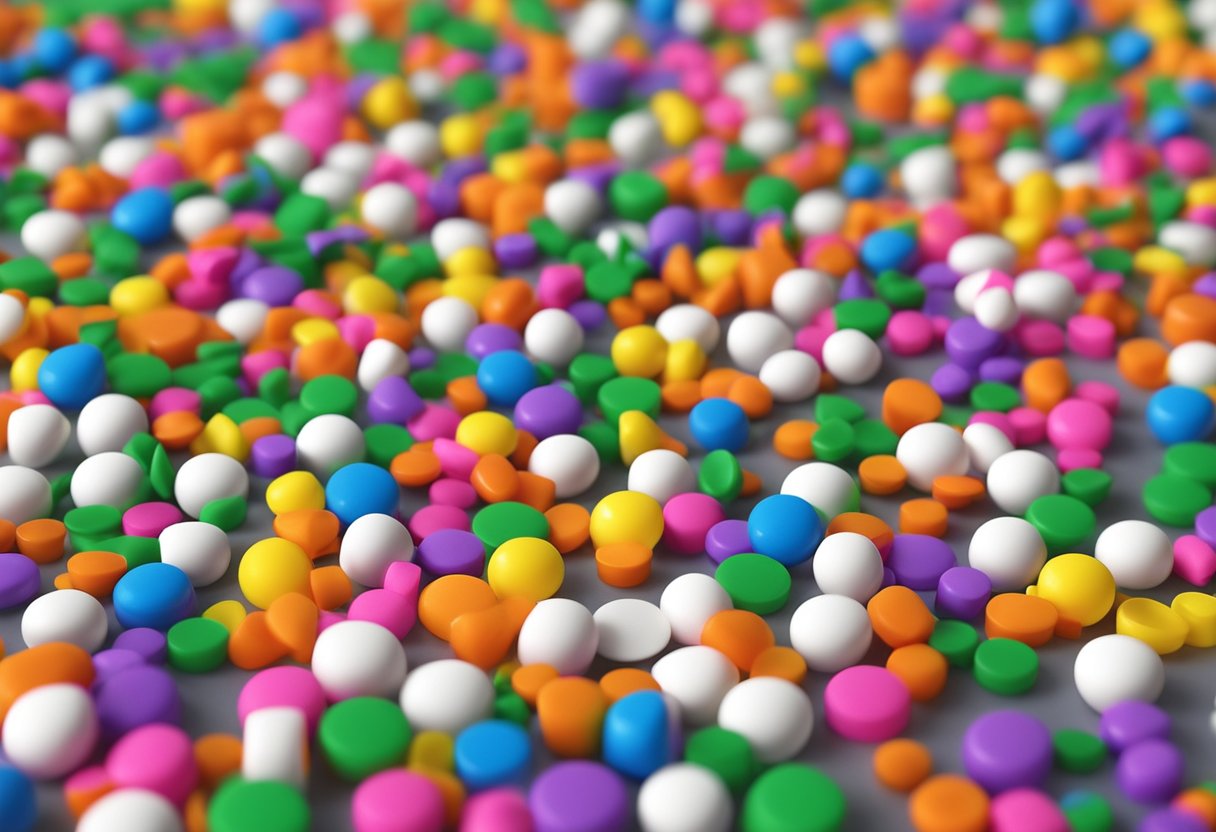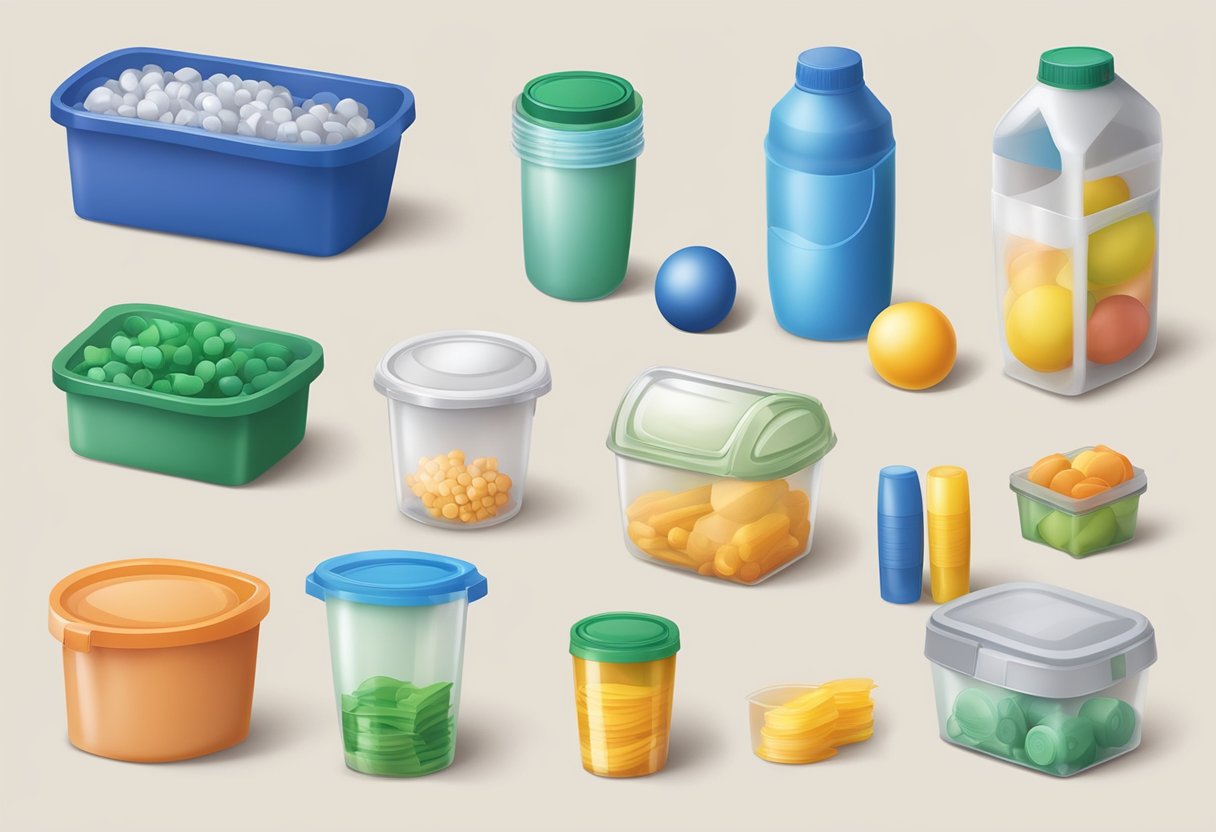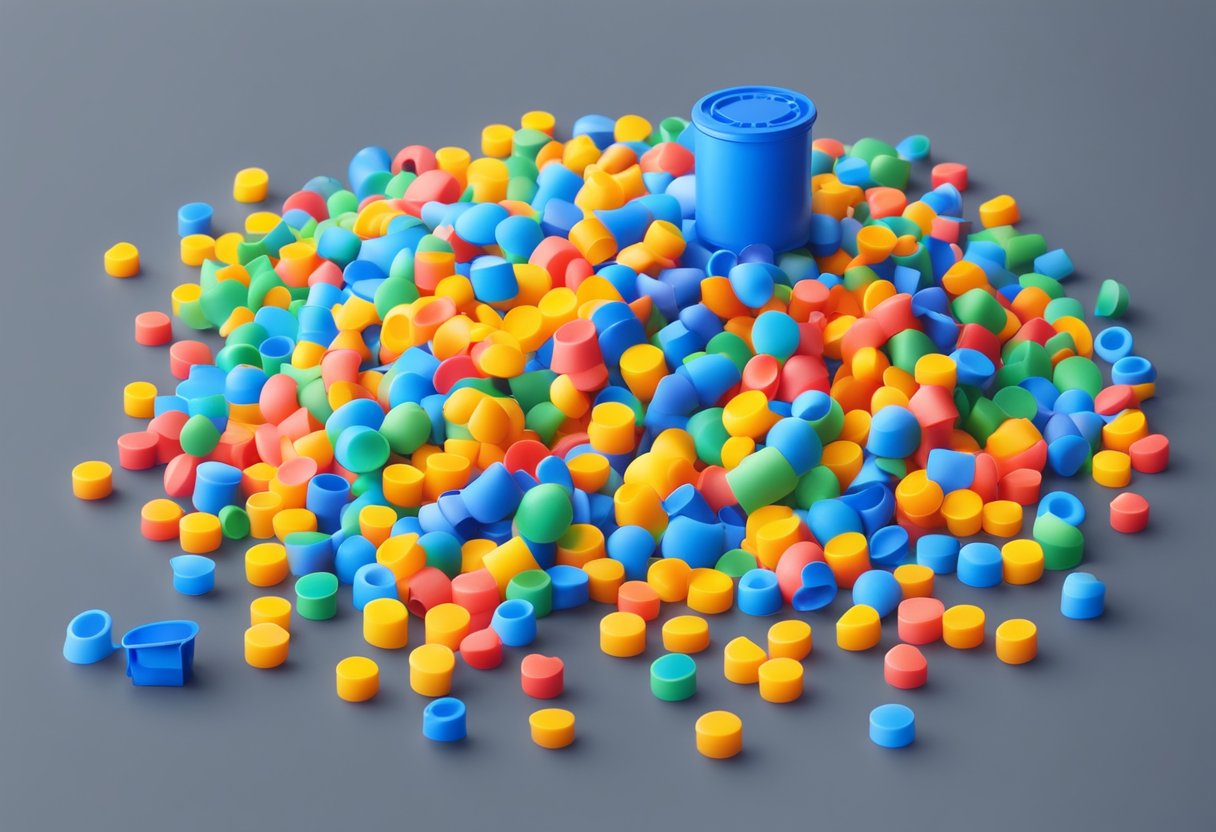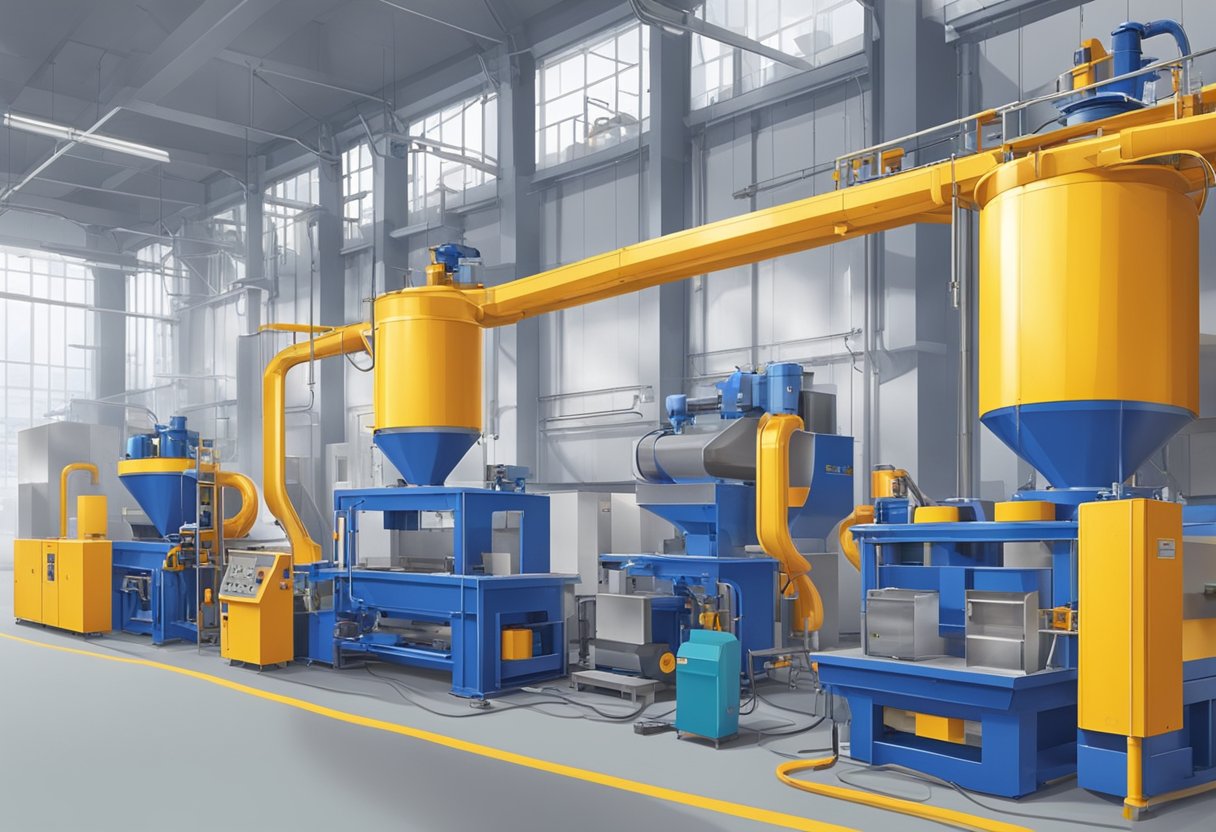PE PP PS Plastic: Understanding the Differences and Common Uses
19/01/2024
PE PP PS plastic is a type of plastic that is commonly used in everyday products. PE stands for polyethylene, PP stands for polypropylene, and PS stands for polystyrene. These plastics are widely used due to their versatility, durability, and low cost.

Polyethylene pe pp ps plastic is the most commonly used plastic in the world. It is used in a wide range of applications, including packaging, toys, and construction materials. Polypropylene (pe pp ps plastic) is also widely used in packaging, as well as in textiles and automotive parts. Polystyrene (pe pp ps plastic) is commonly used in disposable cups and food packaging, as well as in insulation and other building materials.
Despite their widespread use, there are concerns about the environmental impact of these plastics. They are not biodegradable and can take hundreds of years to break down in the environment. Additionally, they can release harmful chemicals when they do break down, which can have negative effects on wildlife and ecosystems. As a result, there is growing interest in finding alternatives to these plastics that are more environmentally friendly.
Types of Plastics

Polyethylene (PE)
Polyethylene (pe pp ps plastic) is a widely used plastic that is known for its durability, flexibility, and resistance to moisture. It is commonly used in packaging, such as plastic bags and bottles, as well as in the construction of pipes and other structures. PE can be produced in various forms, including high-density polyethylene (HDPE), low-density polyethylene (LDPE), and linear low-density polyethylene (LLDPE). Each form has its own unique properties and is used for different applications.
Polypropylene (PP)
Polypropylene (pe pp ps plastic) is a thermoplastic polymer that is known for its strength, rigidity, and resistance to high temperatures. It is commonly used in packaging, such as food containers and drink cups, as well as in automotive and household appliances. PP can also be used as a fiber, which is used in the production of carpets, upholstery, and clothing.
Polystyrene (PS)
Polystyrene (pe pp ps plastic) is a versatile plastic that is known for its clarity, light weight, and low cost. It is commonly used in packaging, such as foam cups and food containers, as well as in insulation and building materials. PS can be produced in various forms, including expanded polystyrene (EPS) and extruded polystyrene (XPS), each with its own unique properties and applications.
Overall, these three types of plastics are widely used in various industries due to their unique properties and versatility. However, it is important to note that plastic waste can have negative impacts on the environment, and proper disposal and recycling practices should be followed to reduce these impacts.
Properties and Characteristics

Physical Properties
PE, PP, and PS are all thermoplastics, meaning they can be melted and reformed repeatedly. They are known for their lightweight, flexibility, and durability. PE is a waxy, translucent material with a low melting point and high resistance to impact. PP is a tough, rigid material with a high melting point and excellent resistance to stress cracking. PS is a clear, brittle material with a low melting point and excellent optical clarity.
In terms of density, PE has the lowest density of the three, followed by PP and then PS. PE and PP are both resistant to moisture and most chemicals, while PS is more susceptible to chemical attack. All three materials are recyclable, with PE and PP being the most commonly recycled.
Chemical Resistance
PE, PP, and PS all have different levels of chemical resistance. PE is resistant to most acids, alkalis, and organic solvents, making it a popular choice for packaging and containers. PP has excellent resistance to a wide range of chemicals, including acids, alkalis, and organic solvents. PS is less resistant to chemicals, particularly organic solvents, and is more prone to cracking and crazing when exposed to certain chemicals.
Thermal Stability
PE, PP, and PS all have different melting points and thermal stability. PE has a low melting point of around 110-130°C, making it suitable for use in products that require low-temperature processing. PP has a higher melting point of around 160-170°C, making it suitable for use in products that require high-temperature processing. PS has a low melting point of around 80-90°C, making it suitable for use in products that require low-temperature processing.
Overall, PE, PP, and PS are all versatile materials with unique properties and characteristics that make them suitable for a wide range of applications.
Production Processes

Extrusion
PE, PP, and PS plastics are produced through an extrusion process. The process involves melting plastic pellets and forcing them through a die to create a continuous profile of the desired shape. The profile is then cooled and cut to the desired length. The extrusion process is commonly used to produce plastic sheets, films, and pipes.
Injection Molding
Injection molding is another common production process used for PE, PP, and PS plastics. The process involves melting plastic pellets and injecting the molten plastic into a mold cavity. The plastic then cools and solidifies, and the mold is opened to release the finished product. Injection molding is commonly used to produce plastic parts for various industries including automotive, medical, and consumer goods.
Blow Molding
Blow molding is a production process used to create hollow plastic parts such as bottles, containers, and toys. The process involves melting plastic pellets and blowing them into a mold cavity. The plastic then cools and solidifies, and the mold is opened to release the finished product. Blow molding is commonly used for producing high-volume plastic products.
Overall, the production processes for PE, PP, and PS plastics are versatile and widely used in various industries. Each process has its advantages and disadvantages, and the choice of process depends on the specific requirements of the product being produced.
Applications and Uses
Packaging
PE, PP, and PS plastics are widely used in the packaging industry due to their excellent properties such as durability, flexibility, and transparency. These plastics are commonly used to make bottles, containers, bags, and films for food and beverage packaging. They are also used in the pharmaceutical industry for packaging medicines.
PE plastic is commonly used for packaging materials such as grocery bags, shrink wrap, and bubble wrap due to its high flexibility and low cost. PP plastic is widely used for packaging materials such as yogurt cups, margarine tubs, and microwaveable food containers due to its high heat resistance and durability. PS plastic is commonly used for packaging materials such as disposable cups, plates, and cutlery due to its transparency and rigidity.
Automotive
PE, PP, and PS plastics are also used in the automotive industry due to their lightweight, durability, and resistance to chemicals and heat. These plastics are commonly used to make various automotive components such as bumpers, dashboards, and interior trims.
PE plastic is commonly used for automotive fuel tanks due to its excellent chemical resistance. PP plastic is widely used for automotive interior trims and battery cases due to its high heat resistance and durability. PS plastic is commonly used for automotive exterior trims such as grilles and emblems due to its excellent rigidity and impact resistance.
Consumer Goods
PE, PP, and PS plastics are commonly used in the manufacturing of various consumer goods due to their excellent properties such as lightweight, durability, and low cost. These plastics are commonly used to make various consumer goods such as toys, electronic casings, and household items.
PE plastic is commonly used for manufacturing toys and electronic casings due to its high flexibility and low cost. PP plastic is widely used for manufacturing household items such as buckets, storage containers, and laundry baskets due to its high durability and resistance to chemicals. PS plastic is commonly used for manufacturing disposable utensils and packaging materials due to its excellent rigidity and transparency.
Recycling and Environmental Impact
Recycling Techniques
PE, PP, and PS plastics are all recyclable materials. Plastic recycling involves a series of steps, including collection, sorting, cleaning, and reprocessing. The collected plastics are sorted by type and color, and then cleaned to remove any contaminants. The cleaned plastics are then melted down and reformed into new products.
There are several recycling techniques used for PE, PP, and PS plastics. Mechanical recycling is the most common technique, which involves melting down the plastic and reforming it into new products. Chemical recycling is another technique that involves breaking down the plastic into its chemical components and then reforming it into new products.
Biodegradability
PE, PP, and PS plastics are not biodegradable, which means they do not break down naturally in the environment. This can lead to environmental problems, such as plastic pollution in oceans, rivers, and landfills. However, some companies are developing biodegradable plastics made from renewable resources, such as cornstarch and sugarcane. These biodegradable plastics can break down naturally in the environment and may be a more sustainable alternative to traditional plastics.
Environmental Policies
Many countries have implemented environmental policies to reduce the impact of plastic waste on the environment. For example, some countries have banned single-use plastics, such as plastic bags and straws, to reduce plastic pollution. Other countries have implemented extended producer responsibility (EPR) programs, which require manufacturers to take responsibility for the disposal of their products and packaging.
In conclusion, recycling is an important step in reducing the environmental impact of PE, PP, and PS plastics. While these plastics are not biodegradable, there are efforts to develop more sustainable alternatives. Environmental policies can also play a role in reducing plastic waste and promoting sustainability.
Market Trends and Economics
Supply and Demand
The demand for polyethylene (PE), polypropylene (PP), and polystyrene (PS) plastics has been steadily increasing over the years. This can be attributed to the versatility, durability, and cost-effectiveness of these materials. The demand for PE, PP, and PS plastics is expected to continue to rise in the coming years due to the increasing demand from various industries such as packaging, construction, and automotive.
On the supply side, the production of PE, PP, and PS plastics is dominated by a few large players such as ExxonMobil, Dow Chemical, and SABIC. This oligopoly has led to a concentration of power in the industry, which can affect the supply and pricing of these materials.
Price Fluctuations
The prices of PE, PP, and PS plastics are subject to fluctuations due to various factors such as supply and demand, raw material prices, and geopolitical events. The prices of these materials have been relatively stable in recent years, but sudden changes in any of the aforementioned factors can lead to significant price fluctuations.
The pricing of PE, PP, and PS plastics is also affected by the type and grade of the material. For example, high-density polyethylene (HDPE) is generally more expensive than low-density polyethylene (LDPE) due to its superior properties.
Global Trade Dynamics
The global trade of PE, PP, and PS plastics is dominated by a few major players such as China, the United States, and Europe. The trade dynamics of these materials are subject to various factors such as trade policies, tariffs, and exchange rates.
China is the largest producer and consumer of PE, PP, and PS plastics, and its trade policies have a significant impact on the global market. The United States is a major producer and exporter of PE and PP plastics, while Europe is a major producer and exporter of PS plastics.
In recent years, there has been a trend towards localization of production due to increasing concerns over supply chain disruptions and rising transportation costs. This trend is expected to continue in the coming years, which could affect the global trade dynamics of these materials.
Innovations and Developments
Bioplastics
Bioplastics are a type of plastic made from renewable biomass sources, such as vegetable fats and oils, corn starch, and pea starch. They are becoming increasingly popular due to their biodegradability and reduced environmental impact. Bioplastics can be used for a variety of applications, such as packaging, disposable cutlery, and even car parts.
One notable development in bioplastics is the use of algae as a raw material. Algae are a highly renewable resource that can be harvested quickly and easily. They are also rich in lipids, which can be used to produce bioplastics. Researchers are currently exploring the potential of algae-based bioplastics for a range of applications.
Composite Materials
Composite materials are made by combining two or more materials to create a new material with improved properties. In the case of plastics, composites can be used to create materials that are stronger, more durable, or more heat-resistant than traditional plastics.
One example of a plastic composite is carbon fiber reinforced plastic (CFRP). This material combines a plastic matrix with carbon fibers to create a lightweight, high-strength material. CFRP is commonly used in aerospace and automotive applications, where its strength and low weight are highly valued.
Nanotechnology in Plastics
Nanotechnology involves the manipulation of matter on an atomic, molecular, and supramolecular scale. In the field of plastics, nanotechnology can be used to create materials with new and improved properties.
One application of nanotechnology in plastics is the use of nanoclay particles. These particles can be added to plastic to improve its strength, stiffness, and barrier properties. They can also be used to create materials with enhanced flame resistance.
Another area of development in nanotechnology is the use of graphene in plastics. Graphene is a highly conductive material that can be added to plastic to improve its electrical and thermal conductivity. It can also be used to create materials with enhanced mechanical properties.




